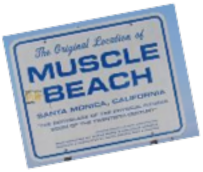|
Prepositional PhrasesThere are some verbs that are frequently followed by prepositions, but since the central meaning is not changed, these are actually prepositional phrases acting as verb modifiers. An example is look at something. A test to discover if a verb-preposition combination is a phrasal verb or a prepositional verb is to form a what question moving the preposition to the front of the question. For example, we have identified look up a word as a phrasal verb. So if we make a question, up what should I look? The question simply does not work at all! This is because the word up is not a preposition, but a part of the verb itself. On the other hand, look at something is a verb followed by a preposition, and it forms an acceptable (if somewhat stilted or unnatural sounding) question: At what should I look? This is possible because at is a preposition, not part of the verb.
Activity 11.6: Phrasal or Prepositional? Determine whether the verb in each sentence is best described as a phrasal verb or as a prepositional verb. Consider the meaning and use the test “P what did/does ....?”
Activity 11.7: Types of Phrasal Verbs All of the following sentences have phrasal verbs. Underline the phrasal verbs. Then try to group them according to similarities. Exercise 11.7: Click on the phrasal verbs to underline them. When the selection is correct, a check mark will appear at the beginning of each sentence. After selecting all the phrases, type into the text boxes below the terms used to group them and the phrases that go into each group.
Phrasal verbs divide into several groups. There are transitive an intransitive phrasal verbs, just as there are with other action verbs. In Activity 11.7, sentences 2 and 3 have intransitive phrasal verbs. Sentences 1, 4, 5, and 6 have transitive phrasal verbs. If phrasal verbs simply mirrored the other actions verbs like this, there wouldn’t be a great deal of difficulty with them. However, the transitive phrasal verbs divide again into separable and inseparable verbs. That is, the particle can be separated from its main verb in a separable phrasal verb, but in an inseparable phrasal verb, the particle can’t be separated. Brush off in sentence 5 and pay back in sentence 6 are two separable phrasal verbs. Their particles can be separated from their main verbs by their direct objects. In contrast, pick on in sentence 1, look out for in sentence 4, and stand by in sentence 4 are all inseparable phrasal verbs; it is ungrammatical to move the direct object between the main verb and its particle. As a result, there are numerous difficulties attached to phrasal verbs for the non-native speaker of English. First, the meaning is often idiomatic (can’t be determined from an analysis of the meanings of the parts of the verb). Second, it is difficult to learn which phrasal verbs are transitive and which are intransitive, and finally, of the transitive verbs it is hard to know which can be separated and which can’t be separated. The diagram at the end of the chapter can help to present the subcategories, but it is still necessary to learn exactly which words belong in which subcategory along with their meanings. End |


